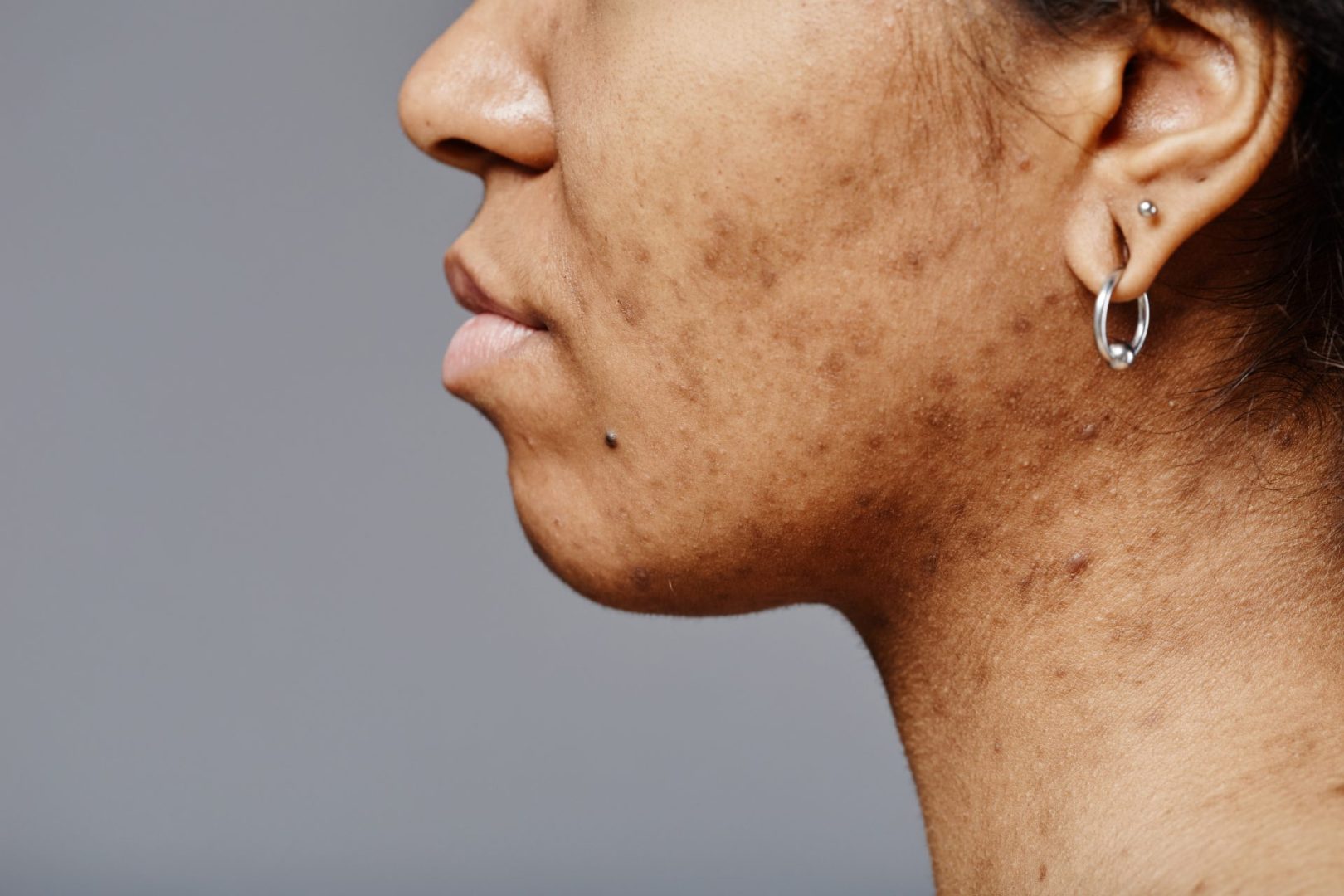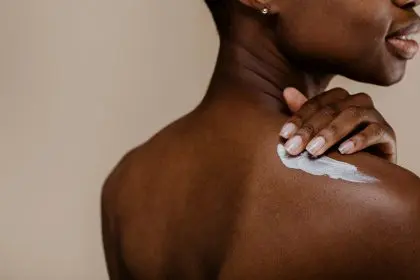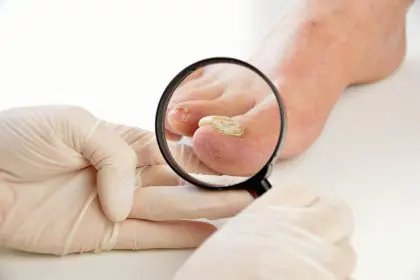Neck acne remains one of the most misunderstood and overlooked forms of acne, yet it affects a significant portion of people who experience facial breakouts. This frustrating skin condition can impact self-confidence and daily comfort, particularly when it involves painful cysts or persistent inflammation along the delicate neck area.
The neck presents unique challenges for acne management due to its location and the various factors that contribute to breakouts in this region. Unlike facial acne, neck acne often develops in areas that are frequently touched, covered by clothing, or exposed to hair products and accessories that can exacerbate the condition.
Understanding neck acne requires recognizing that it’s not simply an extension of facial acne but rather a distinct condition with its own set of triggers, characteristics, and treatment approaches. The skin on the neck differs from facial skin in thickness, oil production, and sensitivity, making targeted care essential for effective management.
1. Neck acne affects nearly half of facial acne sufferers
The connection between facial and neck acne is stronger than many people realize. Research indicates that approximately half of individuals who experience facial breakouts also develop acne on their upper body, including the neck area. This correlation suggests that the underlying factors contributing to facial acne often extend to other areas of the body.
The neck’s proximity to the face means it’s exposed to many of the same environmental factors, hormonal influences, and skincare products that affect facial skin. Hair products, makeup, and cleansing routines that impact the face often have direct effects on the neck area as well.
This widespread occurrence makes neck acne a significant concern for millions of people, yet it receives far less attention than facial acne in terms of research, treatment options, and public awareness. Many individuals struggle with neck breakouts without realizing how common the condition actually is.
The psychological impact of neck acne can be substantial, particularly because it’s often visible and difficult to conceal with makeup or clothing. This visibility can lead to self-consciousness and avoidance of certain clothing styles or social situations.
2. Multiple types of lesions can appear on the neck
Neck acne manifests in various forms, each with distinct characteristics and treatment requirements. Whiteheads and blackheads represent the mildest forms, appearing as small, non-inflammatory bumps that result from clogged pores. These comedonal lesions are often the first signs of developing acne in the neck area.
Papules and pustules represent more inflammatory forms of neck acne, appearing as red, raised bumps that may contain pus. These lesions can be tender to the touch and may cause discomfort when moving the neck or when clothing rubs against them.
Cysts and nodules represent the most severe forms of neck acne, developing deep within the skin and often causing significant pain and swelling. These lesions can persist for weeks or months and have a higher risk of leaving permanent scarring if not properly treated.
The location of neck acne can vary significantly, with breakouts occurring along the hairline, under the jaw, on the sides of the neck, or on the back of the neck. Each area presents unique challenges for treatment and prevention due to different exposure patterns and skin characteristics.
3. Hormonal fluctuations play a major role
Hormonal changes represent one of the most significant factors in neck acne development, particularly affecting teenage males and adult females. During puberty, increased hormone production stimulates sebaceous glands to produce more oil, creating conditions that favor acne development throughout the body, including the neck.
Adult women often experience neck acne in connection with their menstrual cycles, with breakouts typically worsening in the weeks leading up to menstruation. Pregnancy and menopause can also trigger or worsen neck acne due to dramatic hormonal shifts that affect oil production and skin sensitivity.
Polycystic ovary syndrome represents a significant hormonal condition that can contribute to persistent neck acne in women. The elevated androgen levels associated with PCOS stimulate excessive oil production and can make acne particularly difficult to control without targeted hormonal treatments.
The neck area may be particularly susceptible to hormonal acne because it contains numerous sebaceous glands that respond strongly to hormonal fluctuations. This sensitivity explains why neck acne often appears cyclically and may require hormone-focused treatment approaches for effective management.
4. External factors significantly contribute to breakouts
The neck’s constant exposure to clothing, accessories, and environmental factors creates unique challenges for acne prevention. Tight collars, scarves, necklaces, and other accessories can trap heat and moisture against the skin while providing friction that irritates pores and promotes bacterial growth.
Hair products present a significant but often overlooked contributor to neck acne. Shampoos, conditioners, styling products, and hair treatments can migrate from the hair to the neck area, clogging pores and causing irritation. Many people fail to thoroughly cleanse their necks after washing or styling their hair, allowing these products to accumulate.
Electronic devices, particularly smartphones and headphones, can transfer bacteria and oils to the neck area during regular use. The warmth generated by these devices can also increase local oil production and create an environment conducive to acne development.
Environmental factors such as air pollution, humidity, and temperature fluctuations can exacerbate neck acne by increasing oil production, clogging pores, or causing skin irritation. Urban environments with high pollution levels may be particularly challenging for individuals prone to neck breakouts.
5. Diet and lifestyle factors influence neck acne
Emerging research suggests that dietary factors may play a role in neck acne development, particularly foods with high glycemic indices that can trigger hormonal fluctuations. Dairy products, chocolate, and foods high in refined sugars have been associated with increased acne severity in some individuals.
Chronic stress represents a significant lifestyle factor that can worsen neck acne through multiple mechanisms. Stress hormones can increase oil production, impair immune function, and promote inflammation, all of which contribute to acne development and persistence.
Sleep quality and duration directly impact skin health and acne severity. Poor sleep can increase stress hormones, impair skin repair processes, and weaken immune function, making the skin more susceptible to acne-causing bacteria and inflammation.
Excessive screen time may contribute to neck acne through multiple pathways, including increased stress levels, disrupted sleep patterns, and direct contact with devices that harbor bacteria. The positioning required for prolonged screen use can also increase sweating and oil production in the neck area.
6. Proper cleansing technique is essential
Effective neck acne management begins with proper cleansing techniques that address the unique characteristics of neck skin. The neck area is often neglected during daily skincare routines, leading to accumulation of oils, dead skin cells, and product residues that can clog pores.
Gentle, non-comedogenic cleansers should be used twice daily on the neck area, with particular attention to areas where hair products or makeup may accumulate. The cleansing process should be thorough but gentle to avoid irritation that could worsen inflammation.
Water temperature plays a crucial role in neck cleansing, with lukewarm water being optimal for removing oils and products without causing excessive dryness or irritation. Hot water can strip the skin of natural oils, leading to rebound oil production and increased acne risk.
Post-cleansing care is equally important, with oil-free moisturizers and sunscreens being essential for maintaining skin health without clogging pores. Many people skip moisturizing the neck area, leading to dryness and irritation that can actually worsen acne conditions.
7. Over-the-counter treatments can be effective
Several over-the-counter ingredients have proven effective for treating mild to moderate neck acne. Benzoyl peroxide works by killing acne-causing bacteria and helping to unclog pores, making it particularly effective for inflammatory neck acne lesions.
Salicylic acid offers excellent pore-clearing properties by helping to remove dead skin cells and excess oil that contribute to clogged pores. This beta-hydroxy acid can penetrate oil-filled pores effectively, making it particularly useful for comedonal neck acne.
Tea tree oil provides natural antimicrobial properties that can help reduce acne-causing bacteria without the harsh side effects sometimes associated with synthetic treatments. However, it should be used in diluted form to prevent skin irritation.
Retinoids, available both over-the-counter and by prescription, can help normalize skin cell turnover and prevent pore clogging. These vitamin A derivatives are particularly effective for preventing new acne lesions from forming in the neck area.
8. Professional treatment may be necessary
Persistent or severe neck acne often requires professional medical intervention to achieve effective control. Dermatologists can provide prescription medications that are not available over-the-counter, including topical and oral antibiotics, stronger retinoids, and hormonal treatments.
Prescription topical treatments may include stronger concentrations of active ingredients or combination products that address multiple aspects of acne development simultaneously. These treatments are particularly important for inflammatory neck acne that doesn’t respond to over-the-counter options.
Hormonal treatments, including birth control pills and anti-androgen medications, may be recommended for women whose neck acne is primarily driven by hormonal fluctuations. These treatments address the underlying hormonal causes rather than just surface symptoms.
In-office procedures such as chemical peels, laser therapy, or professional extraction may be recommended for severe neck acne or to address scarring from previous breakouts. These treatments can provide more dramatic results than at-home care alone.
9. Prevention strategies are highly effective
Preventing neck acne is often more effective than treating existing breakouts. Simple lifestyle modifications can significantly reduce the likelihood of developing neck acne or experiencing recurrent breakouts in this area.
Clothing choices play a crucial role in neck acne prevention. Loose-fitting, breathable fabrics help reduce friction and heat buildup that can contribute to pore clogging. Natural fibers like cotton are generally preferable to synthetic materials that can trap moisture and bacteria.
Hair care practices significantly impact neck acne risk. Thoroughly rinsing hair products from the neck area, using non-comedogenic hair products, and keeping hair clean and styled away from the neck can reduce the risk of product-related breakouts.
Regular cleaning of items that contact the neck, including phone cases, headphones, pillowcases, and clothing, helps reduce bacterial transfer and accumulation. These items can harbor bacteria and oils that contribute to acne development when they come into contact with the skin.
10. Early intervention prevents complications
Addressing neck acne early in its development can prevent more serious complications and reduce the risk of permanent scarring. Early intervention is particularly important for deep, painful lesions that have a higher risk of leaving lasting marks.
Recognizing the early signs of neck acne allows for prompt treatment that can prevent mild lesions from progressing to more severe forms. Small blackheads or whiteheads are much easier to treat than large, inflamed cysts or nodules.
Avoiding picking or squeezing neck acne lesions is crucial for preventing scarring and secondary bacterial infections. The neck area is particularly prone to scarring due to the skin’s characteristics and the frequent movement that occurs in this region.
Professional evaluation becomes important when neck acne is widespread, painful, or not responding to over-the-counter treatments. Early professional intervention can prevent the condition from worsening and reduce the likelihood of permanent complications.
Understanding individual triggers
Each person’s neck acne may have unique triggers and characteristics that require personalized approaches to management. Keeping a detailed diary of breakouts, including timing, location, and potential triggers, can help identify patterns and guide treatment decisions.
Common triggers include specific hair products, clothing materials, jewelry, stress periods, dietary factors, or hormonal fluctuations. Identifying these individual triggers allows for targeted prevention strategies that can be more effective than general approaches.
The response to different treatments can vary significantly between individuals, making it important to work with healthcare providers to find the most effective combination of treatments for each person’s specific situation.
Patience is essential when treating neck acne, as improvement often takes several weeks or months to become apparent. Consistent application of prevention and treatment strategies is more effective than sporadic intensive efforts.
Long-term management strategies
Successful neck acne management often requires long-term commitment to prevention and treatment strategies. This includes maintaining consistent skincare routines, making appropriate lifestyle modifications, and being prepared to adjust treatments as needed over time.
Regular follow-up with healthcare providers helps ensure that treatment plans remain effective and appropriate as skin conditions change. This is particularly important for individuals using prescription medications or those with hormonal components to their acne.
The psychological impact of neck acne should not be underestimated, and addressing the emotional aspects of the condition may be as important as treating the physical symptoms. Support groups, counseling, or other resources may be helpful for individuals whose neck acne significantly impacts their quality of life.
Neck acne management is most successful when viewed as part of overall health and wellness rather than simply a cosmetic concern. This comprehensive approach addresses the multiple factors that contribute to acne development and provides the best foundation for long-term skin health.


















